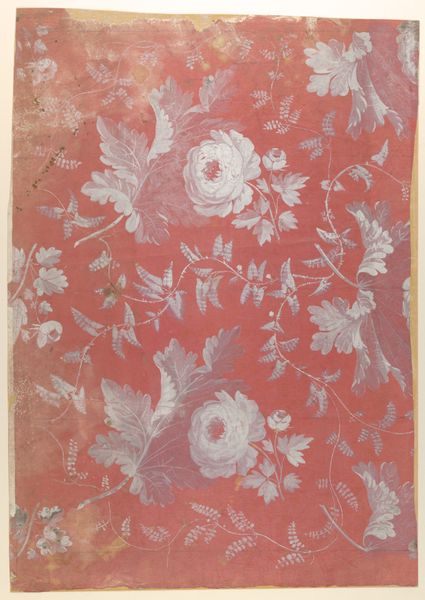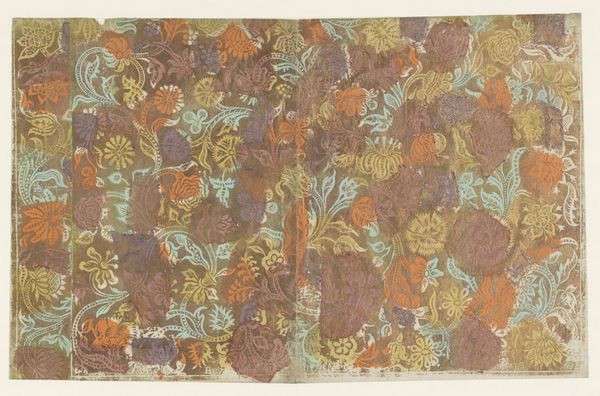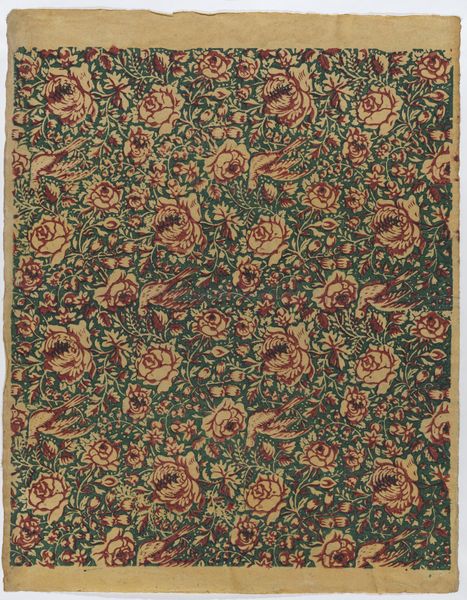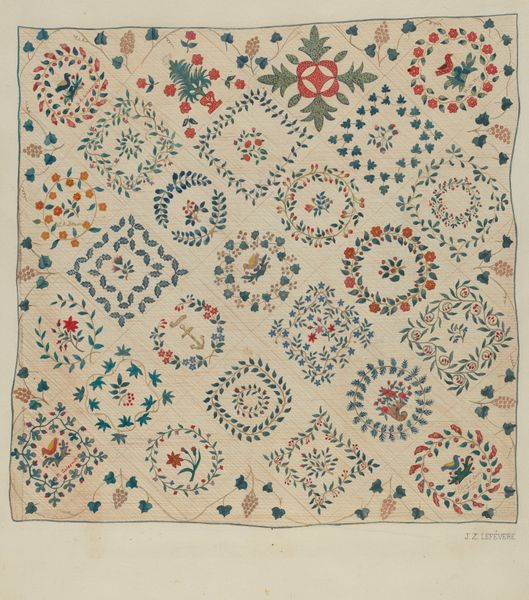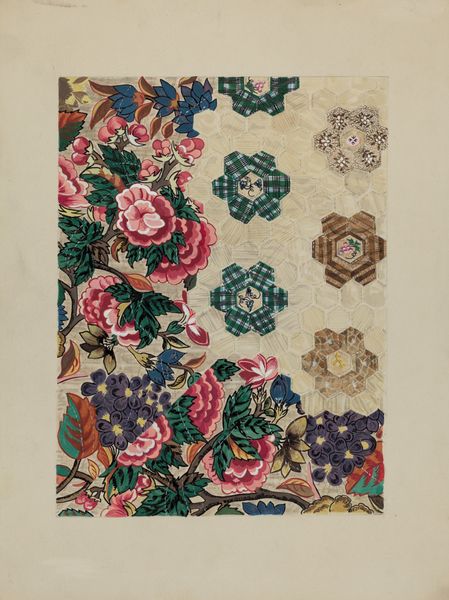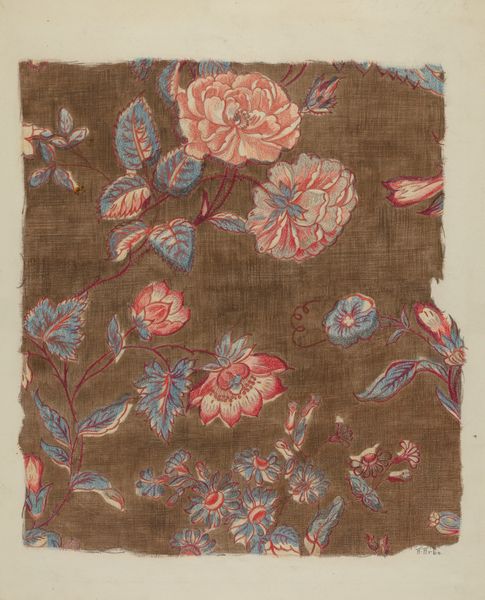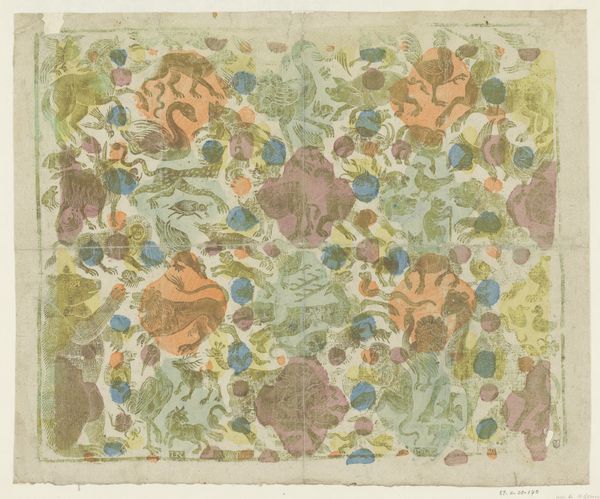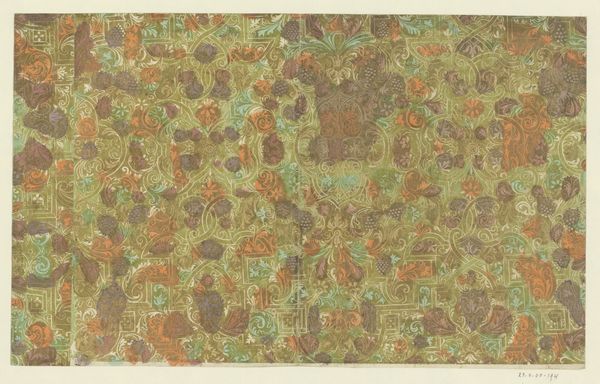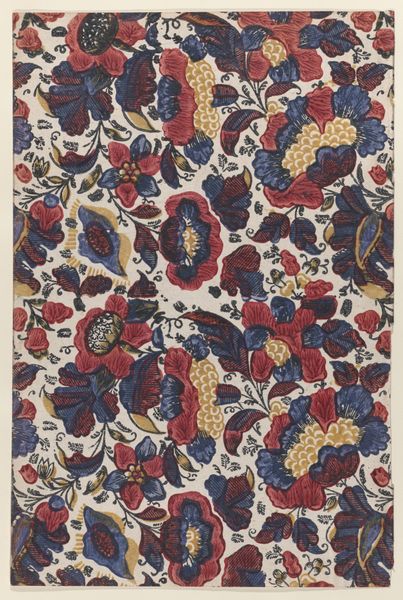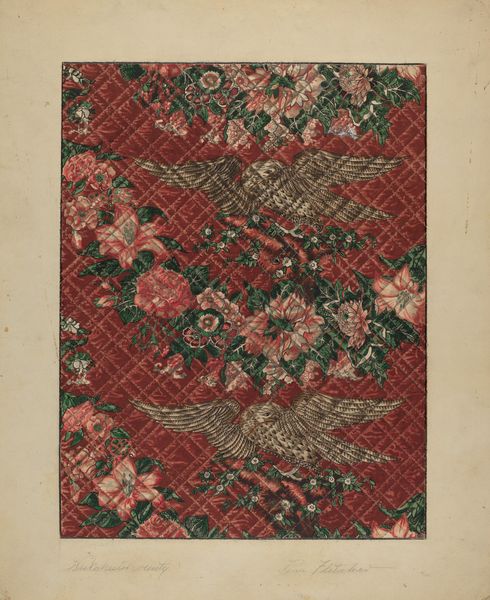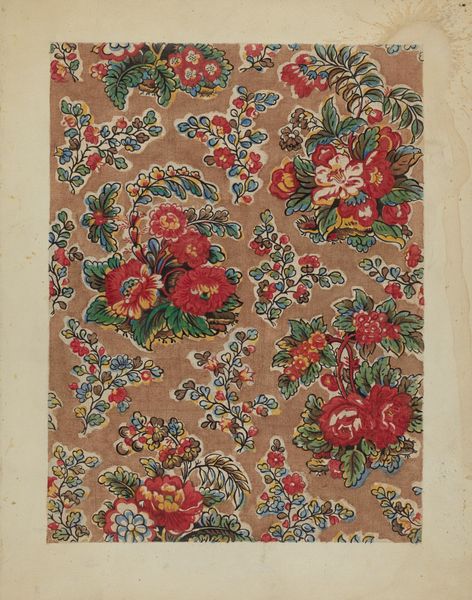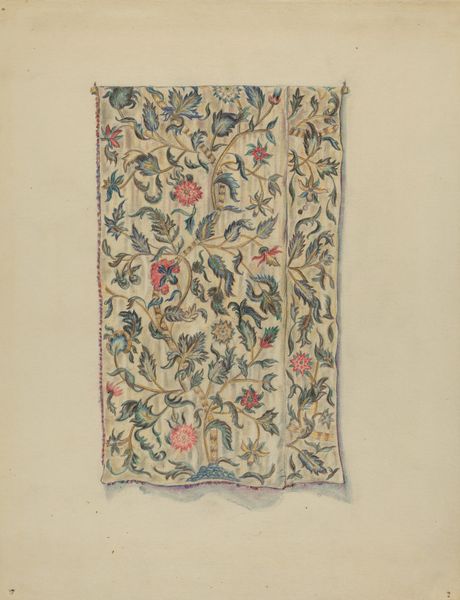
print, textile
# print
#
impressionism
#
pattern
#
textile
#
folk-art
#
decorative-art
Dimensions: L. 41 x W. 37 1/4 inches 104.1 x 94.6 cm
Copyright: Public Domain
Curator: Oh, it’s just luscious! The way the roses and morning glories tangle...there’s a definite wildness here, almost like stumbling into a secret garden. Editor: That initial burst of beauty certainly masks a more complicated story. This printed textile, likely produced by the Stinton Bros. between 1851 and 1872, offers a window into Victorian domesticity, consumer culture, and perhaps even gendered labor. Curator: Gendered labor? Explain that, because all I see are flowers. Exquisite ones, but still. Editor: Well, think about who would have most likely interacted with this "Piece," as it’s simply titled, on a daily basis. Textiles like this were predominantly aimed at women. Consider their roles as homemakers, as caretakers—their lives often confined to the domestic sphere even as the Industrial Revolution was reshaping the world outside. This piece, with its riotous beauty, represents both an escape and perhaps a form of quiet rebellion against those constraints. Curator: A rebellion in rosebuds? I love it! There's a real tactile quality to this even as a print. You can practically feel the cool smoothness of the fabric, can’t you? Makes me want to reach out and smooth out any possible wrinkles in the space. It's that comforting. Editor: Absolutely, and we can also think about what these patterns were covering—stains, imperfections—within the home. Were the people able to hide these same parts of themselves as well? This folk-art style serves a deeply gendered decorative purpose and deserves our contemporary reevaluation in conversation with this function. The Impressionistic brushstrokes hint at movement, progress, but it remains within defined parameters, in decorative spaces, for defined social subjects. Curator: You always manage to bring art back to society's structural cracks. Here I was, lost in the romance of it all! Thinking about embroidery samplers and lazy summer afternoons with cups of chamomile. Editor: Chamomile has its place, for sure! But art also always holds those uncomfortable tensions, the points of friction that drive change. Understanding that dynamic gives the art itself—even a seemingly innocent textile piece—more depth and texture, I think. Curator: Texture and thorny rose stems! It definitely makes me appreciate its complex place in history so much more than I would have expected! Thank you! Editor: My pleasure. Hopefully it’s prompted all of us to think about the hidden narratives woven into the fabric of everyday life, then and now.
Comments
No comments
Be the first to comment and join the conversation on the ultimate creative platform.
